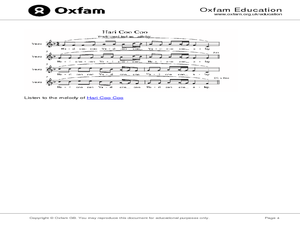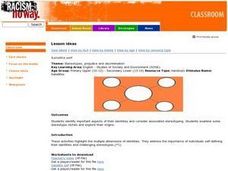Curated OER
Tree Friends
Students are introduced to tree structure and use. They identify their special tree using all senses except sight. Students identify six different internal parts within a cross section of tree trunk (bark, phloem, xylem, cambium,...
Curated OER
Composing Your Own Song
In this music worksheet, students read about composing their own song and how to get started. They identify the main features that make a good song and the various layers that make up the overall texture. Students also use the three...
Curated OER
Ravel String Quartet in F Major, First Movement 1903
In this music instructional activity, students examine sonata format by looking at various pieces of Ravel's Quartet in F major. They anser question about each section of music and write an essay base on the given quotation.
Curated OER
Imperialism and Expansion: Part 2
Students explore the concept of American Imperialism. In this American foreign policy lesson, students take notes on the Spanish-American War and foreign policy practices of the United States in the late 1800s.
Curated OER
Overcoming Pressures
Students view a video that presents the musical career of vocalist Josh Groban and pay special attention to his performance anxiety and how he has dealt with these fears. They identify ways in which they can combat other types of anxiety.
Curated OER
B is for Banana
Students practice and perform the song "B is for Banana" using their knowledge of basic rhythms in 4/4 and student-created rhythm accompaniment based on speech. This excellent lesson is provided by the MENC (National Association for...
Curated OER
Learning Crescendo and Decrescendo
Third graders examine the sounds and notes for crescendos and decrescendos. They attend a concert by a symphony orchestra and when they return to the classroom they identify the crescendos and decrescendos in music they hear.
Curated OER
Native American and Greek Myths
Fifth graders identify seven different constellations and explain a myth that accompanies it. As a class, they listen to myths associated with the Greek and Native American cultures. To end the activity, they write their own myth...
Curated OER
KEYBOARDS
Second graders become familiar with appearance and characteristic sound of piano, identify piano as part of percussion family, find middle C on the keyboard, observe scale, chord, and "broken" chord, and listen to a well-known classical...
Curated OER
Global Harmony
Learners listen to world music samples and try to identify the countries of origin; students work in small groups to design an online "world music caf??."
Curated OER
Locomotion, Time And Shapes
Young scholars practice the concepts of time and rhythm using drum beats. They also create body shapes using verbal cues. The shapes made include stretched, curled, angular, or twisted. The rhythm of beats is increased or decreased to...
Curated OER
Space Exploration
Sixth graders identify and interpret the following: What is space?, Space Race, Living in space?, Man on the Moon, Astronaut training; students compare/contrast US and Russia space exploration. Students write a letter of application to...
Curated OER
ELA Lesson Plan Focusing on Artists and Composers
Students research a selected composer and artist. They write a biography about each one and include information about at least two works created by the chosen artist or composer. Students note similar characteristics of their compared...
Curated OER
Mahler: Ruckert Lieder: ‘Urn Mitternacht' [1905]
In this music worksheet, learners examine their general knowledge and musical knowledge of Mahler's "Urn Mitternacht" as they respond to twenty-seven short answer questions.
Curated OER
Being Me in the Face of Adversity - Americans Who Stood Up for Their Beliefs
Students identify important Americans from the colonial, revolutionary and slavery periods who are noted for standing up for their beliefs in the face of peer disapproval. They identify the importance of music in motivating and...
Curated OER
Everybody's Boppin', Lambert, Hendricks and Ross
Students probe the musical style of scat singing with imitation instruments. While listening to the musical pieces, they identify when one singer finishes and another begins. The singing groups' styles are contrasted in this lesson.
Curated OER
Help Wanted: A Lighting Engineer For Popular Rock Group
Students are assigned to groups, and determine each member's role in the group. They will design an experiment to determine a way to produce the three primary and five secondary colors. Students discuss color and mood. They listen to a...
Curated OER
Hop Oh Bunny
Students imitate, sing, move, and discuss musical techniques in this exciting kindergarten music lesson plan. Emphasis is placed on the song "Hop Oh Bunny", call and response, rhythms, tempos, and the direction of pitch movement.
Curated OER
A Travel Journal for Homer's Odyssey
Students identify their favorite excerpts from "The Odyssey". They add graphics and music they find on the internet to the words. They share their creation with the class.
Curated OER
Life Science: Exploring Our Human Bodies
Students explore the concept of the human body. They complete a variety of activities concerning the function of various organs. They listen to their heartbeat with a stethoscope, examine how muscles work during a game of tag, and play...
Curated OER
Lullabies From Around the World
Young scholars investigate lullabies from Ghana, Poland, and India. In this music lesson, students learn several lullabies from several countries and find the rhythm and pulse within each song.
Curated OER
Historic Heroes
Students recognize traits of heroes as depicted in music, art and literature. For this cross curricular lesson, students evaluate and analyze various works fo art from different cultures that depict heroes.
Curated OER
Focused Learning Lesson: American History
Eleventh graders examine the 1920s which was known as the "Roaring Twenties". They identify the Harlem Renaissance, Prohibition, and the Women's Suffrage movement.
Curated OER
Satellite Self
Students identify important aspects of their identities and consider associated stereotyping. They examine some stereotype cliches and explore their origins.
They address the importance of individuals self-defining their identities and...







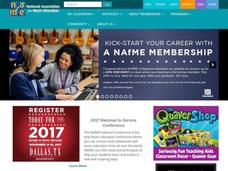

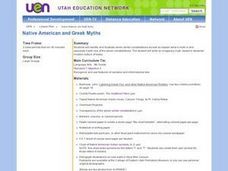
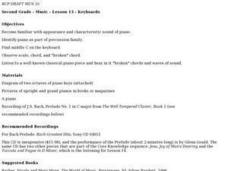




![Mahler: Ruckert Lieder: ‘Urn Mitternacht' [1905] Worksheet Mahler: Ruckert Lieder: ‘Urn Mitternacht' [1905] Worksheet](http://content.lessonplanet.com/resources/thumbnails/187418/large/cgrmlwnvbnzlcnqymdezmdmzmc0zmty2nc12b3o2mzuuanbn.jpg?1414283764)






